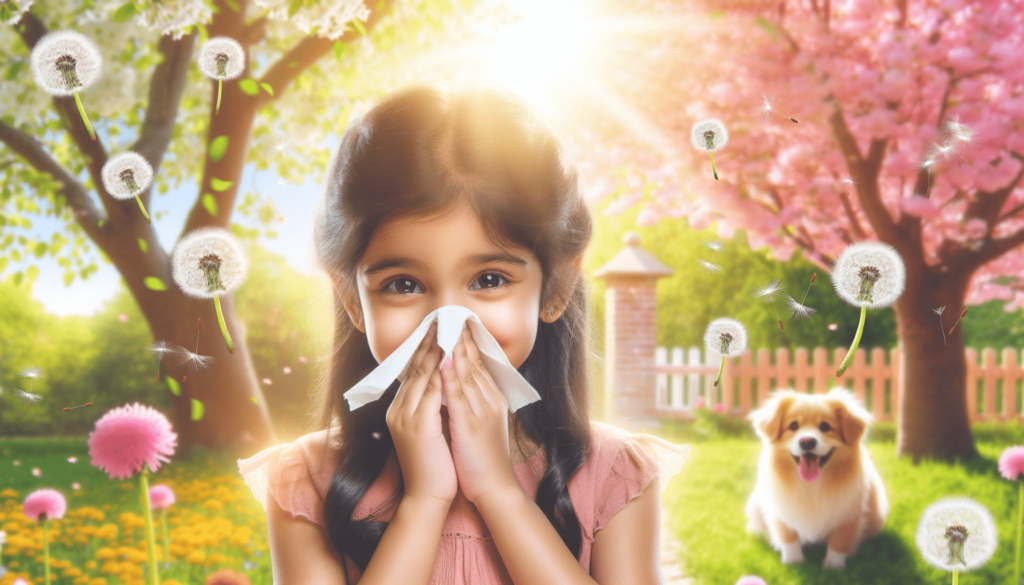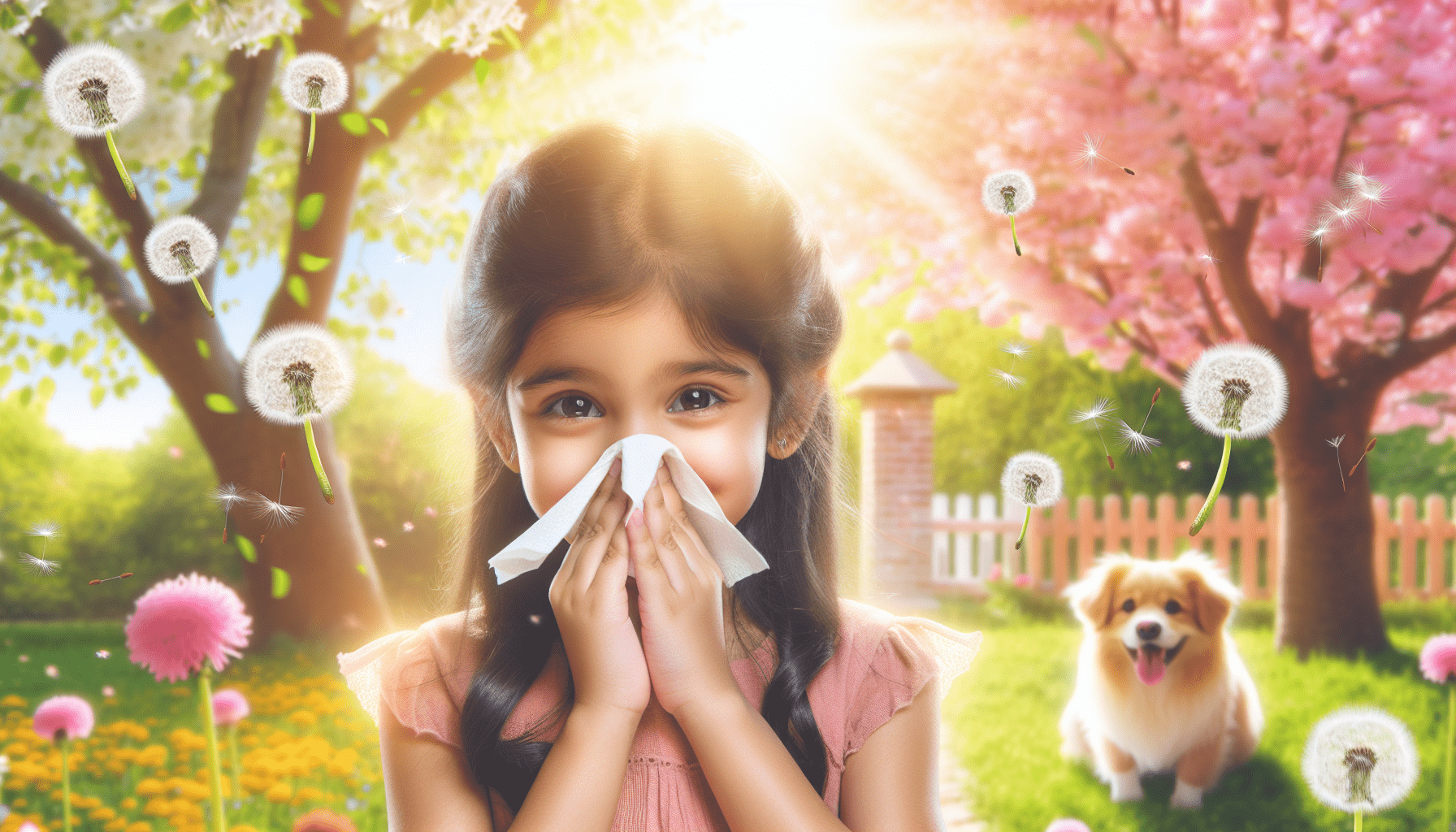Have you ever wondered why your child experiences sneezing fits or difficulty breathing during certain times of the year? Child allergies and asthma often go hand-in-hand, making it essential to understand the connection between the two. In this guide, we’ll break down the relationship, triggers, and ways to manage both conditions so you can help your child lead a happier, healthier life.
Understanding Allergies in Children
Allergies are common in children and can take many forms. These occur when your child’s immune system reacts to typically harmless substances such as pollen, dust mites, or pet dander.
What are Allergies?
Allergies are the result of the immune system identifying a usually harmless substance as a threat. This can lead to a range of symptoms, including sneezing, itching, and inflammation.
Common Allergens
Common allergens that affect children include:
| Allergen | Description |
|---|---|
| Pollen | Microscopic grains from trees, grass, and weeds |
| Dust mites | Tiny bugs that thrive in house dust |
| Pet dander | Tiny, even microscopic, flecks of skin shed by cats, dogs, rodents, birds, and other animals with fur or feathers |
| Mold | Fungi that thrive in moist environments |
| Food Allergens | Includes peanuts, tree nuts, milk, eggs, wheat, soy, fish, and shellfish |
Symptoms of Allergies
Symptoms of allergies can vary widely but generally include:
- Sneezing
- Itchy or runny nose
- Watery eyes
- Coughing
- Skin rashes or hives
Understanding Asthma in Children
Asthma is another common chronic condition in children, characterized by inflammation of the airways, leading to difficulty breathing.
What is Asthma?
Asthma is a chronic lung disease marked by episodes of airway narrowing and inflammation, causing wheezing, shortness of breath, and coughing.
Common Asthma Triggers
Triggers for asthma can overlap with allergens but also include:
| Triggers | Description |
|---|---|
| Respiratory Infections | Common colds or flu can trigger asthma symptoms |
| Physical Activity | Exercise-induced asthma is common in children |
| Cold Air | Breathing in cold air can exacerbate symptoms |
| Smoke and Pollutants | Cigarette smoke, pollution, or strong chemicals |
| Stress and Emotions | High levels of stress or strong emotions can trigger asthma |
Symptoms of Asthma
Asthma symptoms are sometimes confused with other respiratory conditions. They include:
- Wheezing
- Shortness of breath
- Chest tightness
- Frequent coughing, particularly at night or early in the morning

The Connection between Allergies and Asthma
It’s not uncommon for children with allergies to also develop asthma, or vice versa. This relationship is known as the “Atopic March,” where conditions like eczema, food allergies, and asthma progress in a sequential manner.
What is the Atopic March?
The Atopic March refers to the progression of allergic diseases that typically begin in childhood. The sequence often starts with eczema or food allergies and may later develop into respiratory allergies and asthma.
| Stage | Condition |
|---|---|
| Initial Stage | Eczema (usually in infancy) |
| Second Stage | Food Allergies |
| Third Stage | Allergic Rhinitis (hay fever) |
| Final Stage | Asthma |
Why Do Allergies Lead to Asthma?
When allergens such as pollen are inhaled, they can trigger an allergic reaction in the airways. This reaction can cause inflammation and make it harder for your child to breathe, exacerbating asthma symptoms.
Diagnosing Allergies and Asthma
Proper diagnosis is crucial for effective management of both conditions. A healthcare provider can use several tests to identify triggers and ascertain whether your child has allergies, asthma, or both.
Allergy Testing
Allergy testing helps in identifying specific triggers. Common methods include:
| Test Type | Description |
|---|---|
| Skin Prick Test | A small amount of allergen is placed on the skin, which is then gently pricked. A reaction indicates an allergy. |
| Blood Tests | These measure the level of IgE antibodies in response to specific allergens. |
| Patch Tests | Used primarily for contact dermatitis, patches with allergens are applied to the skin. |
Asthma Screening
Asthma diagnosis usually involves:
| Test Type | Description |
|---|---|
| Spirometry | Measures lung function and airflow, determining how much air your child can exhale in one breath. |
| Peak Flow Meter | A device that measures the speed at which your child can exhale. |
| Methacholine Challenge | Involves inhaling a substance that causes mild airway constriction, confirming asthma diagnosis. |
| Allergy Testing | Identifying allergens that may be triggering asthma symptoms. |

Managing Allergies in Children
Managing allergies effectively requires a multi-faceted approach. Avoidance of known allergens combined with medication can help in controlling symptoms.
Avoidance Strategies
Avoidance is often the first line of defense in managing allergies:
| Allergen | Avoidance Strategies |
|---|---|
| Pollen | Keep windows closed during pollen season, use air purifiers, bathe after outdoor play |
| Dust mites | Use allergen-proof mattress covers, wash bedding in hot water, remove carpets |
| Pet dander | Keep pets out of the bedroom, bathe pets regularly, use HEPA filters |
| Mold | Fix leaks promptly, use dehumidifiers, clean moldy surfaces with bleach |
| Food Allergens | Read food labels carefully, consult with a dietitian |
Medication
Medication can help manage symptoms when avoidance isn’t enough:
| Type of Medication | Function |
|---|---|
| Antihistamines | Block histamine release minimizing symptoms |
| Nasal Corticosteroids | Reduce inflammation in the nasal passages |
| Leukotriene Modifiers | Block substances that cause allergy symptoms |
| Immunotherapy | Gradually desensitizes the immune system to allergens through injections or sublingual tablets |
Managing Asthma in Children
Effective asthma management hinges on avoiding triggers, regular monitoring, and the use of prescription medications when needed.
Avoiding Triggers
Understanding and avoiding asthma triggers can significantly reduce symptoms:
| Trigger | Avoidance Strategies |
|---|---|
| Respiratory Infections | Ensure flu vaccinations, maintain good hygiene |
| Physical Activity | Warm up before exercise, use pre-exercise inhalers |
| Cold Air | Wear a scarf over the mouth and nose in cold weather |
| Smoke and Pollutants | Avoid smoking around your child, use air purifiers |
| Stress and Emotions | Teach stress management techniques, encourage open communication |
Medication
Medication regimens for asthma usually include:
| Type of Medication | Function |
|---|---|
| Short-acting Beta Agonists | Quick relief from acute symptoms, used as needed |
| Inhaled Corticosteroids | Long-term control, reducing airway inflammation |
| Long-acting Beta Agonists | Used in combination with inhaled corticosteroids for long-term control |
| Leukotriene Modifiers | Reduce inflammation and constriction of airways |
| Biologic Therapies | Monoclonal antibodies targeting specific pathways in allergic responses |
Emergency Measures
Despite your best efforts, there may be times when your child’s symptoms become severe. Knowing when and how to act can make all the difference.
Recognizing Severe Symptoms
Symptoms indicating a severe allergic reaction (anaphylaxis) include:
- Difficulty breathing
- Swelling of the face, lips, or throat
- Rapid pulse
- Dizziness or fainting
- Hives
For asthma, watch out for:
- Extreme difficulty breathing
- Cyanosis (bluish tinge to lips or face)
- Severe chest pain
- Unresponsiveness to quick-relief medications
What to Do in an Emergency
Always have an action plan in place. For severe allergies, use an epinephrine auto-injector immediately and call emergency services. For asthma, use a quick-relief inhaler and seek emergency care if symptoms do not improve.
Long-term Management and Support
Managing allergies and asthma effectively is a long-term commitment involving regular medical visits, staying informed, and educational support for your child.
Regular Medical Check-ups
Routine appointments can help monitor symptoms and adjust treatment plans as needed. Frequent check-ups may include physical exams, lung function tests, and discussion of any new symptoms or triggers.
Educating Your Child
Teaching your child about their condition and how to manage it can empower them to take control. Encourage practices such as taking medication on time, recognizing symptoms, and avoiding known triggers.
School and Community Support
Work closely with your child’s school to ensure they understand your child’s condition. Develop an Individualized Health Plan (IHP) or an Emergency Action Plan (EAP) that includes medication administration and emergency contacts. Engage with community support groups for additional resources and shared experiences.
Conclusion
Understanding the connection between child allergies and asthma can be a powerful tool in managing these conditions effectively. By identifying triggers, employing preventative measures, and using the right medications, you can help your child lead a more comfortable, symptom-free life. Remember, professional advice from healthcare providers is invaluable in tailoring the best plan for your child.
